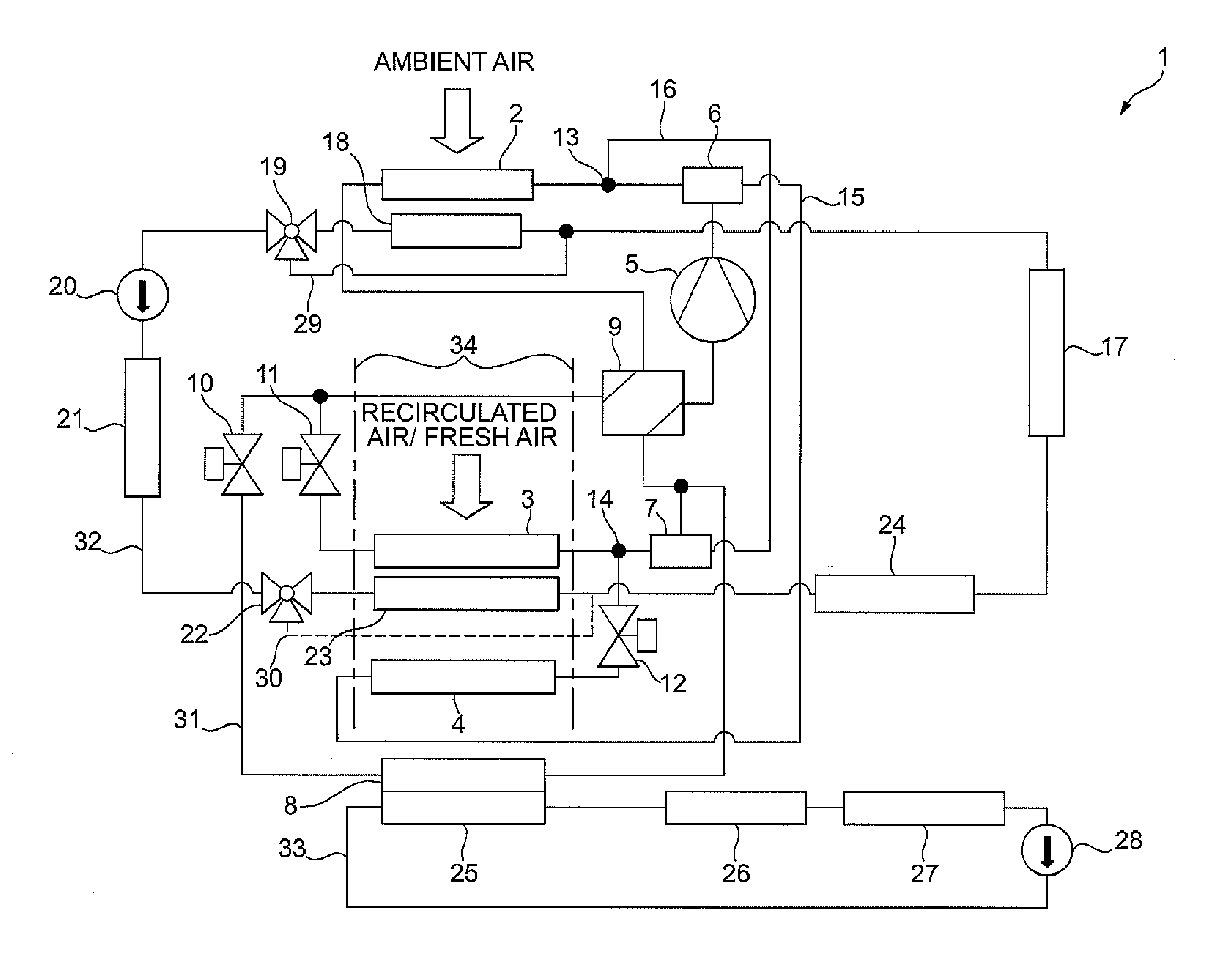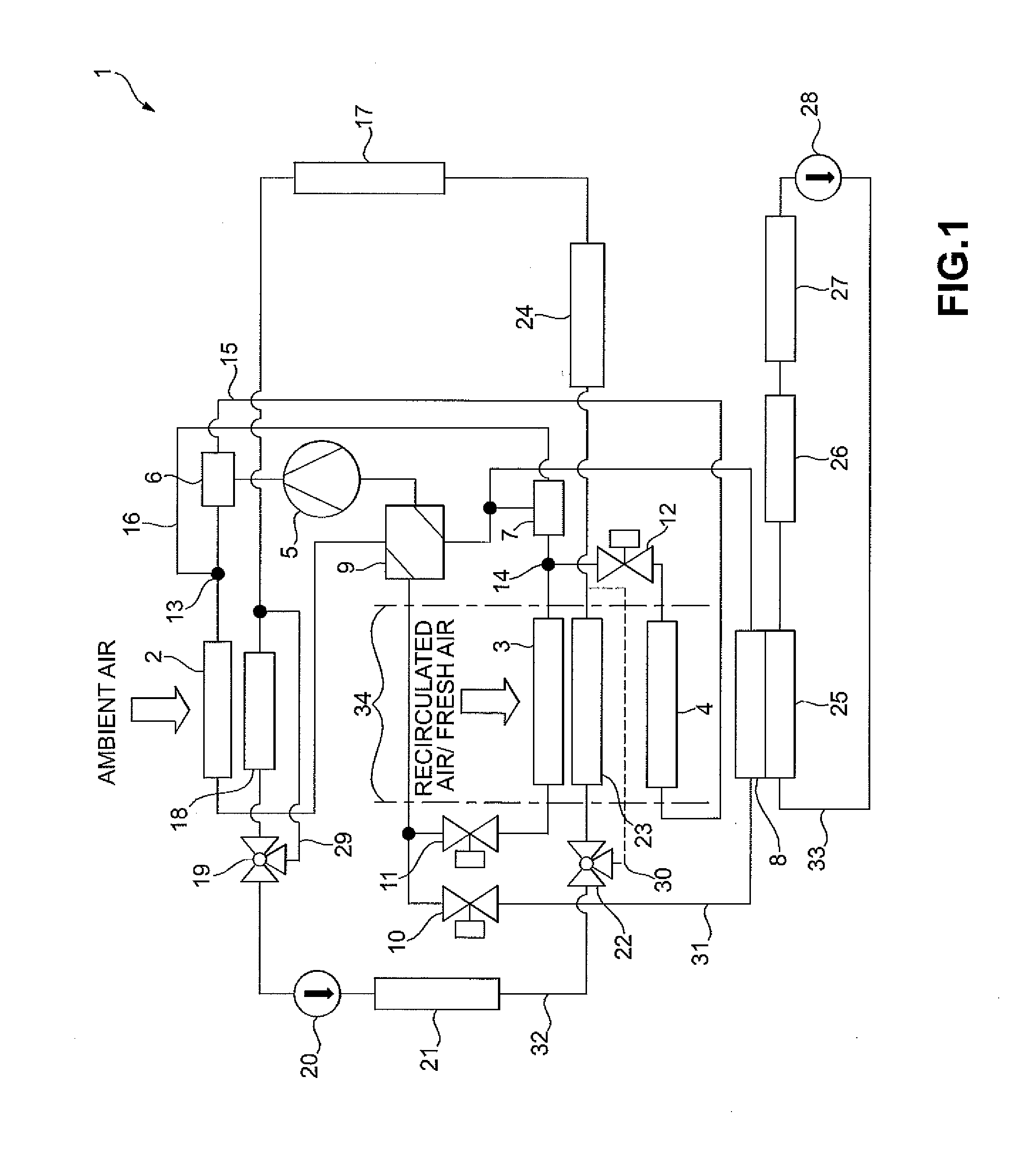Method for operation of an HVAC system
a technology of hvac system and hvac system, which is applied in the direction of domestic cooling apparatus, vehicle heating/cooling device, vehicle components, etc., can solve the problems of unoptimized mixing of partial air mass flow, unsatisfactory heat loss of efficient internal combustion engine at low ambient temperature, other unintended effects, etc., to optimize the exergetic degree of utilization of hvac system, increase the range of vehicle, optimize the effect of energy demand
- Summary
- Abstract
- Description
- Claims
- Application Information
AI Technical Summary
Benefits of technology
Problems solved by technology
Method used
Image
Examples
Embodiment Construction
[0055]The following detailed description and appended drawings describe and illustrate various embodiments of the invention. The description and drawings serve to enable one skilled in the art to make and use the invention, and are not intended to limit the scope of the invention in any manner. In respect of the methods disclosed, the steps presented are exemplary in nature, and thus, the order of the steps is not necessary or critical.
[0056]In FIG. 1 the HVAC system 1 with a refrigerant circuit 31 and two coolant circuits 32, 33 is shown.
[0057]Within the refrigerant circuit 31, in a direction of flow one after the other, an evaporator 3, a compressor 5, a condenser 2, and an expansion device 11 are provided. The components 2, 3, 5 are connected through a plurality of refrigerant conduits to form a closed primary circuit. Further, an inner heat exchanger 9 is optionally integrated into the primary circuit, the inner heat exchanger 9 serving to transfer heat between a liquid refriger...
PUM
 Login to View More
Login to View More Abstract
Description
Claims
Application Information
 Login to View More
Login to View More - R&D
- Intellectual Property
- Life Sciences
- Materials
- Tech Scout
- Unparalleled Data Quality
- Higher Quality Content
- 60% Fewer Hallucinations
Browse by: Latest US Patents, China's latest patents, Technical Efficacy Thesaurus, Application Domain, Technology Topic, Popular Technical Reports.
© 2025 PatSnap. All rights reserved.Legal|Privacy policy|Modern Slavery Act Transparency Statement|Sitemap|About US| Contact US: help@patsnap.com



